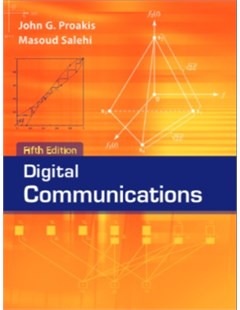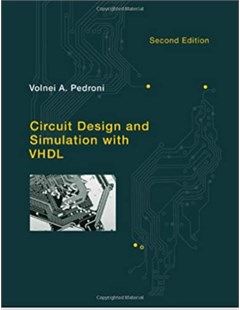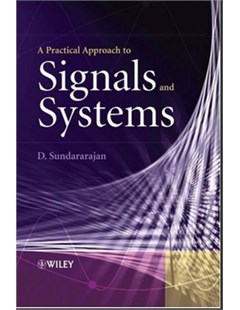Digital Communications (Fifth Edition)
The book “Digital Communications” is a classic book in the area that is designed to be used as a senior or graduate level text. The text is flexible and can easily be used in a one semester course or there is enough depth to cover two semesters. Its comprehensive nature makes it a great book for students to keep for reference in their professional careers.
2008
The book “Digital Communications” is a classic book in the area that is designed to be used as a senior or graduate level text. The text is flexible and can easily be used in a one semester course or there is enough depth to cover two semesters. Its comprehensive nature makes it a great book for students to keep for reference in their professional careers.
The main content of the book consists of sixteen chapters:
+ Chapter 1 is an introduction to the subject, including a historical perspective and a description of channel characteristics and channel models.
+ Chapter 2 contains a review of deterministic and random signal analysis, including bandpass and lowpass signal representations, bounds on the tail probabilities of random variables, limit theorems for sums of random variables, and random processes.
+ Chapter 3 treats digital modulation techniques and the power spectrum of digitally modulated signals.
+ Chapter 4 is focused on optimum receivers for additive white Gaussian noise (AWGN) channels and their error rate performance.
+ Chapter 5 is devoted to carrier phase estimation and time synchronization methods based on the maximum-likelihood criterion. Both decision-directed and non-decisiondirected methods are described.
+ Chapter 6 provides an introduction to topics in information theory, including lossless source coding, lossy data compression, channel capacity for different channel models, and the channel reliability function.
+ Chapter 7 treats linear block codes and their properties. Included is a treatment of cyclic codes, BCH codes, Reed-Solomon codes, and concatenated codes.
+ Chapter 8 provides a treatment of trellis codes and graph-based codes, including convolutional codes, turbo codes, low density parity check (LDPC) codes, trellis codes for band-limited channels, and codes based on lattices.
+ Chapter 9 is focused on digital communication through band-limited channels.
+ Chapter 10 treats adaptive channel equalization. The LMS and recursive leastsquares algorithms are described together with their performance characteristics.
+ Chapter 11 provides a treatment of multichannel and multicarrier modulation.
+ Chapter 12 is focused on spread spectrum signals and systems, with emphasis on direct sequence and frequency-hopped spread spectrum systems and their performance.
+ Chapter 13 treats communication through fading channels, including the characterization of fading channels and the key important parameters of multipath spread and Doppler spread.
+ Chapter 14 is focused on capacity and code design for fading channels. After introducing ergodic and outage capacities, coding for fading channels is studied.
+ Chapter 15 provides a treatment of multiple-antenna systems, generally called multiple-input, multiple-output (MIMO) systems, which are designed to yield spatial signal diversity and spatial multiplexing.
+ Chapter 16 treats multiuser communications, including the topics of the capacity of multiple-access methods, multiuser detection methods for the uplink in CDMA systems, interference mitigation in multiuser broadcast channels, and random access methods.
John G. Proakis; Masoud Salehi. Digital Communications (Fifth Edition). Mc Grall Hill, 2008.
Ngành CÔNG NGHỆ KỸ THUẬT ĐIỆN TỬ , VIỄN THÔNG (7510302)
 |  |  |
| Circuit Design and Simulation with VHDL (second editon) | A Practical approach to signals and systems |
Thứ Tư, 13:59 30/03/2022
Copyright © 2018 Hanoi University of Industry.